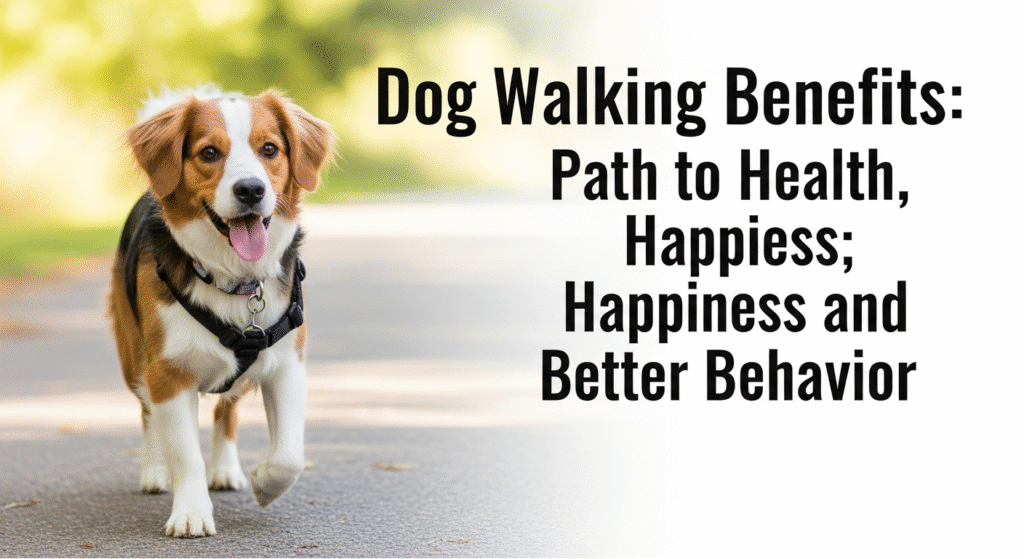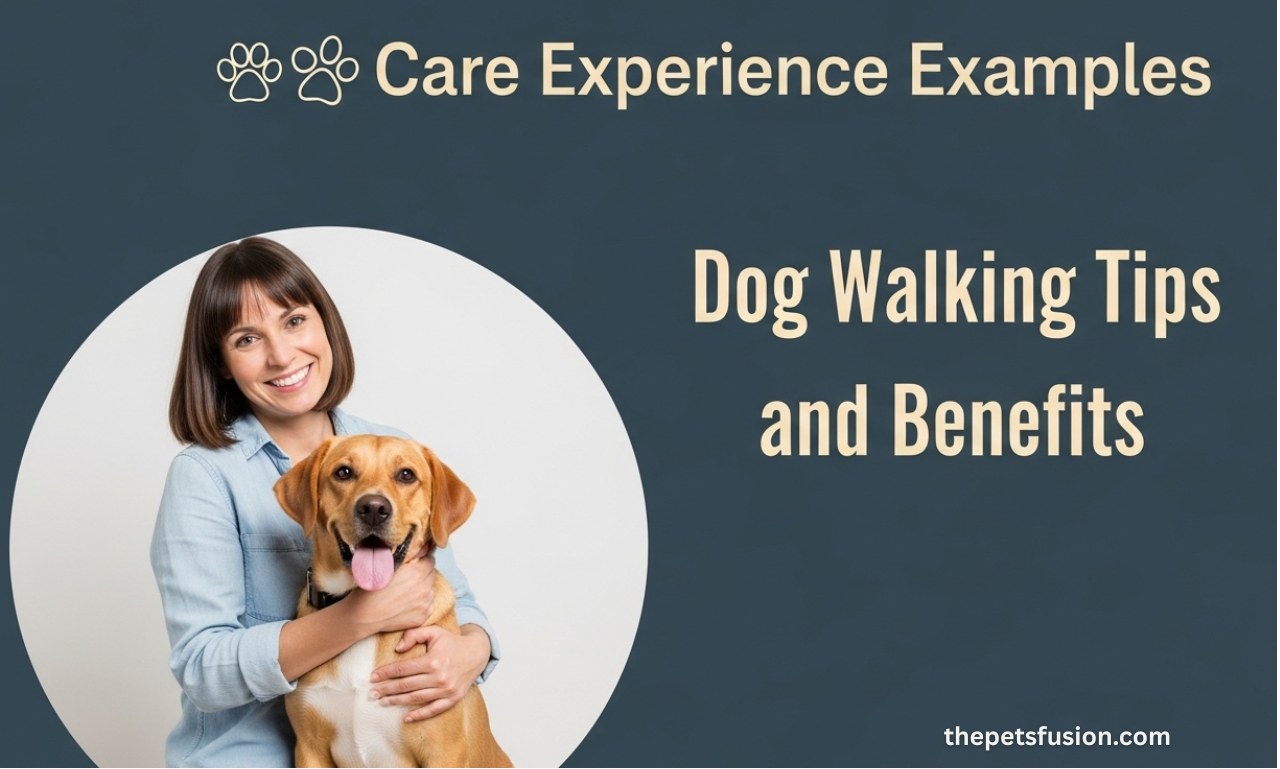Have you ever thought about what makes a good pet caregiver? Whether you’ve been doing it for a long time or you’re just starting, pet care experience examples can help. Think about taking a lively puppy for a walk in the park or soothing a scared cat during a storm. These moments help create trust, develop skills, and build confidence. In this guide, we’ll explore what genuine pet care entails, offering practical tips on dog walking, routines, and building your pet-sitting profile. Stick around—you’re about to discover how small, thoughtful actions turn into a standout experience.
What Makes a Good Experience in Pet Care?
More Than Just Loving Animals
When people ask, “What is considered good experience in pet care?”. Love is a good beginning, but real experience comes from learning to read animals, building skills, and understanding the specific personality and needs of each animal.
Key Traits Every Great Pet Caregiver Has
Three standout qualities define excellent pet care experience examples:
Dependability:
Pets thrive when they have a routine, and their owners rely on you to help maintain that schedule. Being on time, sticking to feeding and walking times, and following instructions help build trust.
Empathy:
Animals can’t talk, but they always find ways to communicate. Good pet sitters or walkers can see when a dog is nervous, when a cat is lonely, or when a rabbit needs a soft touch.
Observation Skills:
A good pet caregiver notices subtle changes, such as when a pet eats less, acts differently, or limps. These might be early signs that the pet is sick or upset.
Real-World Pet Care Experience Examples
Think of these moments as small but powerful demonstrations of your care:
- A pet sitter notices that a usually playful pup is unusually quiet and contacts the owner—this shows awareness and responsibility.
- While dog walking, you realize the pavement is too hot and reroute through the shade, showing thoughtfulness and adaptability.
- You care for a shy cat and patiently sit nearby until she trusts you enough to approach, demonstrating emotional intelligence and respect.
Why This Experience Matters
Whether you’re working on Rover, offering neighborhood walks, or helping a friend with their dog, these skills set you apart. They aren’t just about keeping animals safe—they’re about creating comfort, connection, and trust between pets and their people.
Good experience in pet care isn’t flashy, but it’s meaningful. And often, it’s these everyday choices that build a reputation that pet owners will rave about.
How Dog Walking Builds Strong Pet Care Skills
Walking a dog might seem like a simple task, but it’s one of the most valuable pet care experience examples a person can have. Every walk is a mini adventure where a pet caregiver learns, adapts, and grows more connected with the animal in their care.
Mastering the Basics of Routine Care
Consistent dog walking helps build core pet care habits. You learn how to handle a leash properly, pick safe routes, carry essentials in your dog walking bag, and respond calmly to surprises like a loose dog or a sudden storm. These are real-life experiences that sharpen your ability to think quickly and keep pets safe.
Communication and Behavior Observation
Dogs communicate constantly through body language. A good walker learns to read signals, such as tail position, ear movement, and pacing, to understand the dog’s emotions. Over time, you’ll know when a pup is nervous around traffic or overly excited about squirrels. These observations are crucial, especially when working as a pet sitter or considering more advanced dog walking or dog first aid training in the future.
Building Trust With Dogs and Owners
Trust takes time to build. After a few walks, when the dog wags its tail to say hi and the owner sends a “Thank you” message, it means a lot. It means you are now a regular part of their life and help them feel calm and happy. And that’s what makes every good pet care experience great.
Health and Happiness Benefits
Daily walks don’t just improve your caregiving skills—they improve the dog’s life too. Walking reduces boredom, prevents weight gain, improves digestion, and can even help alleviate anxiety. When you’re walking a dog, you’re also improving their health. That’s a huge responsibility—and a deeply rewarding one.
Dog Walking Tips from Experienced Sitters
If you’ve ever seen a pro dog walker in action, you’ll notice they make it look effortless—but behind the scenes, there’s a lot of thoughtful care and preparation. Whether you’re new to pet care or looking to improve, these dog walking tips from seasoned sitters will help you stand out and keep every tail wagging.
What to Keep in Your Dog Walking Bag

First things first: a reliable dog walking bag is every sitter’s secret weapon. Experienced walkers never leave home without:
- Waste bags
- A collapsible water bowl and fresh water
- Dog-safe treats for training and praise
- A towel (for muddy paws or sudden rain)
Adding extras like a flashlight, hand sanitizer, and even a spare leash can help you feel ready for anything the walk throws at you.
Timing Is Everything

Professionals know that dog walking isn’t a one-size-fits-all activity. Early morning or late evening walks are best in summer, as they help keep dogs calm and safe. In the colder months, midday strolls offer a welcome combination of sunlight and warmth.
Always check the ground with your hand—if it’s too hot or cold for your skin, it’s too harsh for their paws.
Know the Right Pace
Every dog walks differently. A husky might crave a fast pace with distance. A senior pug? A slow, sniff-filled journey. Professional walkers adjust their stride to the dog’s needs, not the other way around.
Treat the walk as the dog’s time to explore, not a race to finish.
What Experienced Sitters Do Differently
Great pet sitters don’t just walk dogs—they read them. They observe posture, breathing, tail movement, and energy. They carry themselves calmly, use consistent commands, and know when to shorten or extend a route based on the dog’s mood or weather.
They also communicate clearly with pet parents after every walk, sharing notes, cute photos, or quick health observations. This extra care creates trust and builds long-term relationships.
In short, dog walking is a skill. When you’re ready, understand your dog’s feelings, and take your time; it turns into something special instead of just a regular task. It’s an essential part of your dog’s day and how you take care of them.
Dog Walking Benefits for Dogs & Humans
Dog walking isn’t just about letting your pup “do their business.” It’s a powerful daily ritual that improves the well-being of both the dog and the person holding the leash. Once you realize how much good comes from this simple act, it stops feeling like a chore and becomes a moment you both look forward to.
For Dogs: A Path to Health, Happiness, and Better Behavior

Regular walks play a massive role in your dog’s physical health. They help with weight control, cardiovascular fitness, and joint flexibility. But the benefits go far beyond the physical.
Walking also gives dogs a mental workout. Every tree sniffed and new route explored satisfies their natural curiosity and instincts. Dogs who walk daily often show less destructive behavior at home—less chewing, barking, or restlessness.
Even their mood improves. A well-walked dog is generally a calmer, more relaxed companion. For dogs prone to anxiety or boredom, walks offer structure and confidence.
For Humans: More Than Just Exercise

Here’s where dog walking benefits truly shine—it helps humans, too. Daily walks create a routine and force us to slow down, breathe fresh air, and unplug. Research indicates that individuals who own dogs and take them for walks tend to experience lower stress levels and are less likely to feel depressed. It’s also a chance to get closer.
When you walk together without any distractions, you can easily understand how your dog feels and acts. Spending time together regularly helps create a stronger bond between people. Also, it’s good for your body. Walking for 20 to 30 minutes every day can improve your heart health, help your body burn calories, and boost your mood, all without needing to visit a gym.
In short, the benefits of dog walking are mutual. It’s an essential part of pet care—and a gift to yourself, too.
What Is Dog Sitting vs Dog Walking?
If you’re exploring pet care experience examples, it’s essential to understand the distinction between dog sitting and dog walking—two distinct yet equally valuable services.
Dog sitting involves staying with a pet while the owner is away. It can be at the pet owner’s home or, in some cases, the sitter’s place. A dog sitter provides round-the-clock care, including feeding, bathroom breaks, playtime, administering medications, and lots of cuddles. It’s a full-on responsibility where consistency, attention to detail, and emotional presence are key.
On the other hand, dog walking is a short-term task, typically 15 to 60 minutes, where a walker comes to take the dog out for exercise and a bathroom break. It’s ideal for pet owners who work long hours or need assistance maintaining their dog’s daily activity levels.
So, who should consider which?
Busy pet parents often prefer a dog walker to maintain their pet’s routine during workdays. Those heading out of town or on vacation usually need a dog sitter to care for their pet in their absence. Some professionals offer both services.
Whether you’re offering one or both, the trust you build with pet parents starts with understanding their specific needs and being reliable, communicative, and caring. Knowing the difference helps you offer the right solution—and stand out as a professional.
What is dog sitting?
Dog sitting is when someone takes care of a dog for its owner, usually when the owner is away. This includes feeding the dog, playing with it, administering medicine if needed, and ensuring its safety overnight.
Daily Pet Care Routine Example
Wondering what a day as a pet sitter is like. Here’s a pet care routine example that shows how much they care.
7:00 AM – Morning Wake-Up
Start the day with a gentle wake-up and a potty break. Dogs usually need to go out first thing in the morning. A short walk around the block helps them stretch and get energized.
7:30 AM – Breakfast and Meds
Prepare the dog’s meal based on the owner’s instructions. If medication is required, this is an ideal time to administer it (especially if it’s mixed with food).
9:00 AM – Walk or Playtime
It’s time for the first long walk of the day. Going for a walk in the neighborhood or exploring a park is essential for maintaining both your physical and mental well-being. Take your dog walking bag with poop bags, dog treats, and water.
11:00 AM – Downtime and Monitoring
Let the dog relax while you see if they are comfortable, have enough water, and look for any signs of stress or sickness. Being quietly together is essential, especially for shy or older pets.
1:00 PM – Midday Potty Break
A quick outside break or a short play session in the yard helps keep things regular and breaks up the afternoon.
5:00 PM – Dinner Time
Give them their dinner, ensuring that you follow the portion sizes and any special instructions provided by the pet owner.
7:00 PM – Evening Walk
Another walk or energetic play session, depending on the dog’s needs and energy level.
9:00 PM – Wind Down
Time for calm bonding—gentle brushing, cuddles, or just lying nearby. Ensure all doors are locked, food is stored, and the dog is safe and secure.
What is an example of a pet care routine?
A pet care routine includes timely feeding, exercise, walks, play, medication, and safety checks, all tailored to the dog’s specific needs.
Tools of the Trade
When building your pet care experience examples, the right tools can make all the difference. Whether you’re a pet sitter or walker, having trusted gear shows professionalism and keeps pets safe.
Essentials in Your Dog Walking Bag
Your dog walking bag should include poop bags, a portable water bottle and bowl, dog-safe wipes, extra leashes or harness clips, treats, and a towel for muddy paws. Don’t forget a flashlight for evening strolls.
Top Tools for Pet Sitters
Pet sitters should have a first aid kit specifically for pets. Baby gates, pet-friendly cleaners, and a notebook to record feeding times and behavioral notes are very useful.
Tech & Apps for Updates
Utilizing pet care apps like Rover or Wag!, or even simple tools like WhatsApp to send photo updates, can enhance your credibility. Clients love transparency and knowing their pets are happy.
Investing in the right tools—and learning how to use them—can help you stay organized, efficient, and trusted.
How to Start Gaining Pet Care Experience
If you’re new to the world of pet care, don’t worry—you can start small and build real experience step by step.
Start Local
Offer help to friends, neighbors, or family with pets. Let them know you’re building experience and are open to dog sitting or walking for free or at a discount. Document your work, take notes, and collect testimonials.
Volunteer
Many shelters and rescues welcome help from animal lovers. Tasks range from walking dogs to cleaning kennels—this hands-on time with pets is gold when it comes to skill-building.
Join Pet Sitter Platforms
Sites like Rover and Wag! Permit you to make profiles and connect with pet parents. Be honest about your experience, but highlight your reliability, love for animals, and any relevant volunteer or personal pet care experience.
Get Great Reviews
When you start getting clients, go the extra mile. Send updates, follow instructions closely, and ask for feedback. Building trust leads to glowing reviews, which in turn lead to more work.
Soon enough, you’ll have a list of pet care experience examples that show your dedication and skill.
Must read: Homemade Dog Food Nutrition Calculator: 3 Steps for Meals!
Conclusion
Gaining real pet care experience examples—whether through dog walking, pet sitting, or volunteering—is more than just a resume builder. It’s a journey filled with responsibility, learning, and love. By consistently showing up, understanding animal behavior, and using the right tools, you become a trusted companion to both pets and their people. Whether you’re starting or growing your skills, every effort counts. Embrace each opportunity to care, and you’ll soon turn your love into a fulfilling and rewarding career in the pet care industry. Love pets? Start building your pet care experience today—one walk, one tail wag, one happy paw at a time. Your journey as a trusted pet sitter begins now!
FAQs
1. Do I need experience to start dog walking on apps like Rover?
Not necessarily, but it helps. Many people start with zero formal experience—just passion and reliability. That said, walking a neighbor’s or friend’s dog first can help you build confidence, skills, and those all-important first reviews.
2. What should I keep in my dog walking bag?
Most sitters recommend packing poop bags, water, a collapsible bowl, treats, and a leash. Some also carry pepper spray or a mini umbrella just in case. Keep it light, but be prepared!
3. How do I handle a reactive or anxious dog during walks?
Stay calm and alert. Avoid triggers when possible, keep the leash short but not tight, and use treats to reward good behavior. Over time, you’ll learn each dog’s comfort zone.
4. What’s the difference between dog walking and dog sitting?
Dog walking is usually a quick visit for exercise and potty breaks. Dog sitting often means staying with the pet for extended periods—feeding, playing, even overnight care. One’s more active, the other more involved.
5. How do I get more bookings as a new pet sitter?
Start with excellent communication and detailed profiles. Offer to care for friends’ pets in exchange for testimonials. Be flexible, respond fast, and always go the extra mile—word spreads quickly!






